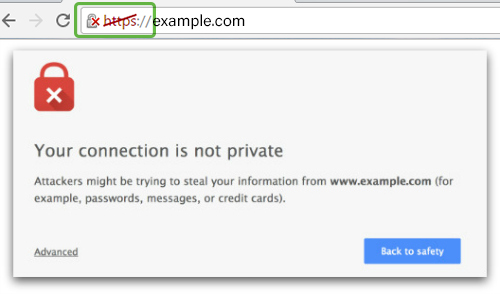How Upgrading to HTTPS Can Secure Your Site, Protect Your Customers & Boost Your Search Rank

If you have a website, you’ve probably heard of SSL or HTTPS—an internet communication protocol that adds an extra layer of security to the standard HTTP connection.
HTTPS has been around for more than 20 years, and initially was mainly used by websites that handle sensitive data such as credit card information. Now, Google is enforcing HTTPS as the standard protocol for all websites.
What is SSL / HTTPS?
HTTP (Hyper Text Transfer Protocol) is the standard system for transmitting information across the internet. For websites using HTTP, all data transmitted between the site server and the browser are in plain text, so anyone who intercepts your connection can read any of the data going back and forth between the site and the site visitor, including passwords and personal and financial data.

HTTPS (Hyper Text Transfer Protocol Secure) uses SSL (Secured Socket Layer) to add an extra level of security by encrypting all communications between the website’s server and the browser used to access it.
An HTTPS connection guarantees three things:
- Website Authentication
HTTPS ensures that your customers are communicating with the intended site and not a fake version. - Data Integrity
With HTTPS, any information transmitted between the site’s server and the site visitor’s browser can’t be altered or corrupted during transfer. - Data Encryption
The information transmitted between HTTPS sites and visitors is private and secure, so no one else can see it in its unencrypted form.
Should You Switch to SSL / HTTPS?

Google has been using HTTPS as a ranking signal since 2014, and in 2017 began displaying a “not secure” warning for non-HTTPS sites.
In May 2021, Google made HTTPS usage mandatory to achieve a "good" rating in its new Page Experience ranking factor. Before Google starting prioritizing websites using HTTPS, only 7% of page one Google results used SSL protocol. By May 2021, 72.5% of all websites were using HTTPS as their default protocol.
How to Upgrade to HTTPS / SSL
If you would like to switch to SSL / HTTPS, here are the steps to making the transition:
- Select, purchase and install a security certificate on your site server and make sure the certificate stays up to date.
- Locate and update URLs for any content, including internal links, embedded videos, images, scripts, forms, etc. from HTTP to HTTPS.
- Test the new HTTPS pages.
- Set up 301 redirects from HTTP to HTTPS to ensure that search engines know your site’s URL has been changed, so anyone using the old URL will automatically be sent to the new URL.
- Ensure that your site is recrawled and reindexed by Google.


